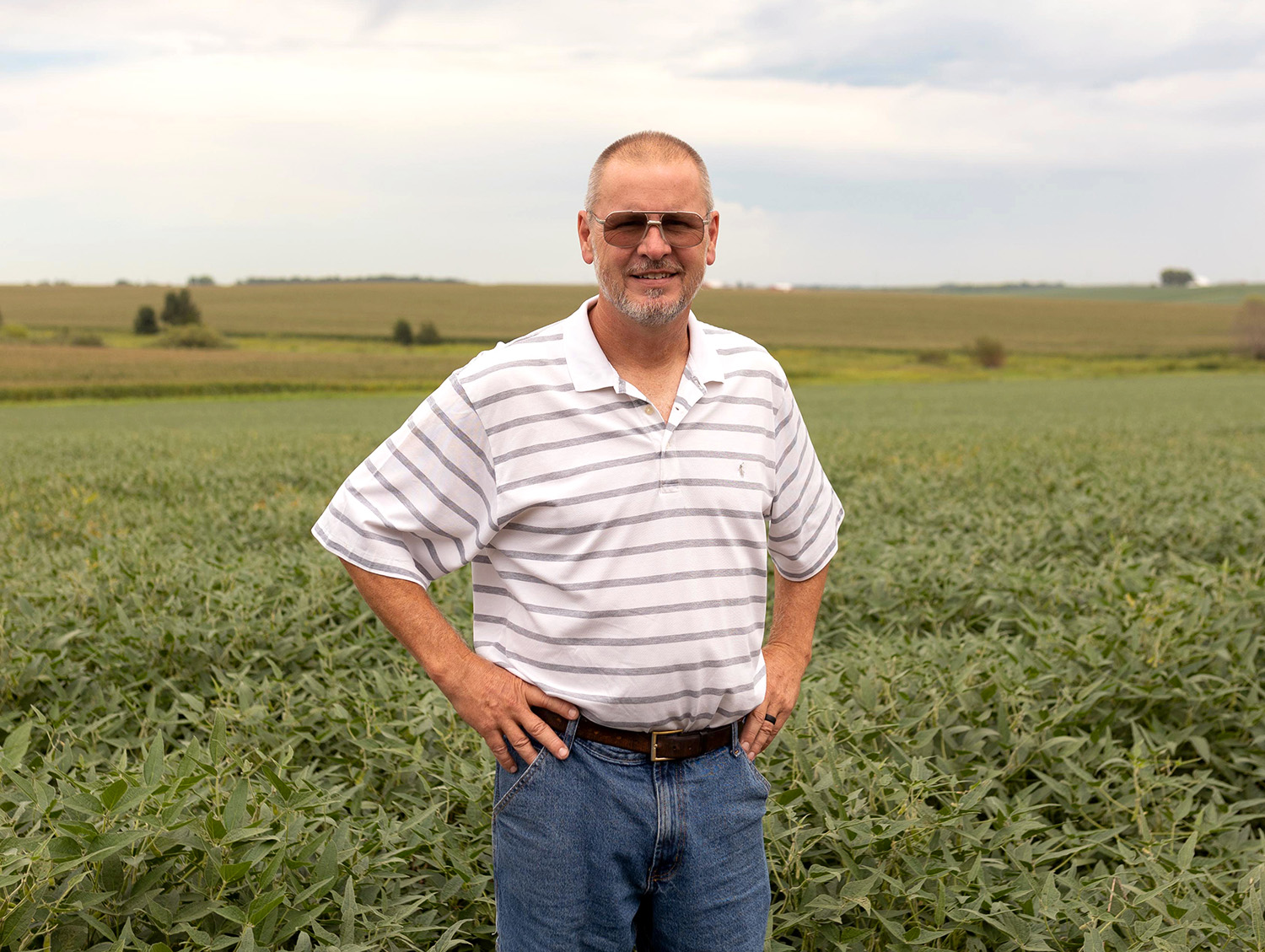
(Photo: Joclyn Bushman/Iowa Soybean Association)
Regenerative Agriculture
October 14, 2022 | Kriss Nelson
Accurate placement of nutrients not only brings an economic benefit but an environmental one as well. To help achieve the goal of providing the plant with the food when it needs it, producers should look to the 4R Nutrient Stewardship program.
“The 4Rs are important from not only an agronomic perspective, but also soil health and water quality,” says Evan Brehm, Iowa Soybean Association (ISA) conservation agronomist.
The 4R concept incorporates the right fertilizer source at the right rate, time and place.
Brehm says being mindful of the nutrient sources used for fertilizer and using split applications of nitrogen work toward 4R stewardship efforts. Also tissue sampling or sap analysis tests help optimize crop health and nutrient management.
“We can use in-season field imagery to help us locate areas that may need more nutrients than others, so we are putting those nutrients in the right place,” Brehm says.
Regenerative agriculture
One practice to consider in achieving the 4RNutrient Stewardship goals is regenerative agriculture – a continual system involving agriculture and nature working simultaneously. “We want to work with nature, not against it,” says Brehm. “We view soil as a living, breathing system.
It is a continuous process as we feed the soil microbes they feed our plants, which in turn produces the crops we want.”
Nutrient sources
Regenerative agriculture also includes regenerative nutrient sources, Brehm says.
“It is a holistic system in the soil where the plants start to mine and find nutrients, such as phosphorus in our soil,” Brehm says. “With rising input costs, we want to make the most of fertilizers and products we have, and using regenerative principles allows for us to do so.”
Mike Bretz of North Liberty started the journey toward regenerative agriculture three years ago.
“I was inspired to reduce input costs while improving soil, water and air quality as well as enhancing the nutrient content of our crops,” says Bretz.
Bretz Farms is practicing 100% no-till. They grow 120 acres of non-GMO corn; 120 acres of soybeans; 120 acres of oats, wheat or rye; and 80 acres of pasture and hay with a multi-species cover crop between the rotations. They also have a 60-head cow/calf herd in a grass-fed operation.
As in nature, soil biology converts nutrients and minerals into usable forms for the crops to uptake. When making nutrient input decisions, Bretz says he relies on results from a spring Haney soil test – a test determining what quantity of soil nutrients are available to soil microbes. They follow up with a sap analysis test in June that reveals what nutrients the crops need. There is also an opportunity to make a foliar application.
Bretz says he has not applied potassium or phosphorus for the last three years. Regarding nitrogen application in his corn, he side-dressed 60 pounds of nitrogen per acre this year. His soybeans are fed from nutrients in the soil and don’t receive synthetic fertilizer.
“We try to avoid activities that kill soil biology, such as tillage, anhydrous ammonia and other synthetic chemical applications,” Bretz says.
Embracing biology
Instead, they embrace activities to support the growth of soil biology, such as adding multi-species cover crops and getting livestock back on the farm ground.
“More biology in a healthy soil leads to nutrients and minerals becoming available to the plant, which leads to reduced input costs,” he says. “Tillage is especially hard on biology as it also crushes the home in which the biology lives. Healthy soil improves soil aggregation, improves water infiltration and reduces water runoff into streams.”
Rather than purchasing nitrogen, phosphorus, potassium or other synthetic fertilizers, Bretz prefers to use cover crops, including rye, hairy vetch and daikon radish. The radish, for example, grows deep into the soil, breaking up compaction. Rye develops a vast root mass and helps to tie up nitrogen, making the nutrient available to crops in the spring. Together, these cover crops help improve the soil so worms can do their job and help with water infiltration.
“We are minimizing inputs as much as we can,” he says. “We have used some organic nutrients, such as emulsified fish fertilizer, which adds a little nitrogen and is not harmful to the biology in the soil. Nature wants to do the work for us.”
What advice does Bretz have for fellow farmers interested in regenerative agriculture?
“Go no-till if you haven’t already done so. Add variety to your crop rotation and allow nature to convert nutrients. These efforts will go a long way to support soil, water and air quality initiatives.”
Back